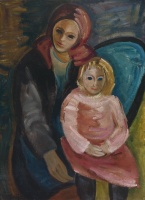
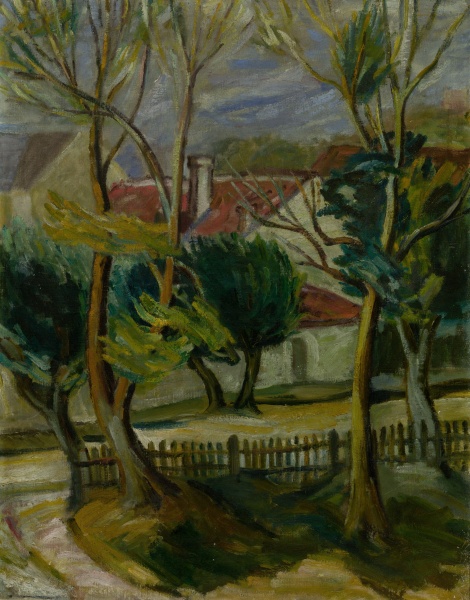

Old Vilnius motif
| Author: |
Antanas Gudaitis (1904–1989)  |
| Created: | 1942 |
| Material: | canvas |
| Technique: | oil |
| Dimensions: | 92 × 73 cm |
| Signature: | unsigned |
After studying at Kaunas School of Art, the eminent painter Antanas Gudaitis (1904–1989) improved his skills in Paris. He moved to Vilnius after it was regained by Lithuania. Between 1941 and 1943, he taught painting at the Vilnius Academy of Art. Like many other painters who had arrived from Kaunas, Vilnius was a discovery to him, and he produced dozens of townscapes during the Second World War. Old Vilnius motif, the view from a window of the Bernardine friary, is a sight that is seen by all artists who have lectured or studied there from the second decade of the 20th century. In fact, today the view differs from that seen by Gudaitis, when St Anne’s Street was not paved, and had crooked wooden fences overgrown with old trees. The street recalls the rural lanes of Žemaitija that Gudaitis had painted before the war, with the same fragmented composition, the vigorous rhythm of lines, and the warm range of colours. Natural forces reign in the picture, and only on closer inspection can the russet tower on Gediminas Hill be distinguished in the top right-hand corner of the picture. However, this iconic detail is not important to Gudaitis: it is a mere daub in the composition, in which the motifs do not matter as much as the artistic language and the vitality of expression. In Soviet times, the artist almost stopped painting Vilnius townscapes.
Text author Laima Laučkaitė
After Stephen Báthory University was closed in 1939, Vilnius Art School opened on 14 June 1940 in the premises of the old Faculty of Art. A year later, it was renamed Vilnius Academy of Art. Justinas Vienožinskis, Viktoras Vizgirda, Antanas Gudaitis and Jonas Kuzminskis came from Kaunas to work at the Academy of Art, and Kaunas Art School offered only courses in applied art. Adherents of the dominant tradition there, who had used expressive brushwork and stressed the importance of colour, and who had found inspiration in nature and the countryside, discovered the urban landscape of Vilnius. The abundance of cityscapes in wartime art can be seen as the wish of the Lithuanians to reclaim their historic capital and make it their own again. Inspired by the Polish Pictorialist tradition which Jan Bulhak had shaped, they juxtaposed its iconic architecture with leafy parts of the city, creating a style that redefined the iconography of the city.
This image of the city was very different to the work of the Polish school. The teachers and students at Stephen Báthory University had paid more attention to drawing than to pictorialism, and put less emphasis on the relationship between nature and architecture.
Text authors Dovilė Barcytė and Ieva Burbaitė
Source: Law firm Valiunas Ellex art album VILNIUS. TOPOPHILIA I (2014). Compiler and author Laima Laučkaitė, KAUNAS–VILNIUS / 1918–1945 (2021). Compilers and text authors Dovilė Barcytė and Ieva BurbaitėExpositions: “Vilnius. Topophilia. Views of Vilnius from the collection of the law firm Ellex Valiunas”, 5 October – 26 November 2017, National Gallery of Art, Vilnius (curator Laima Laučkaitė); "1918-1945 / Kaunas-Vilnius", 27 August 2020 – 21 August 2021, Lithuanian Art Centre TARTLE (Užupio St. 40, Vilnius). Curators Dovilė Barcytė and Ieva Burbaitė.
© LATGA, Vilnius 2024







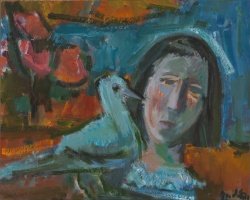
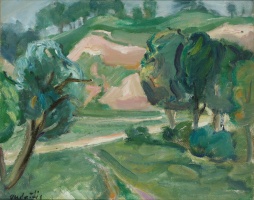
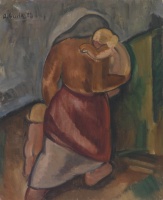
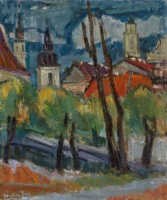
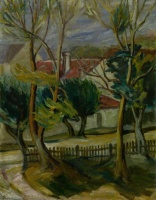
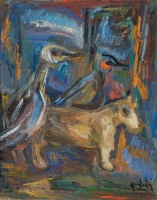
.jpg)
